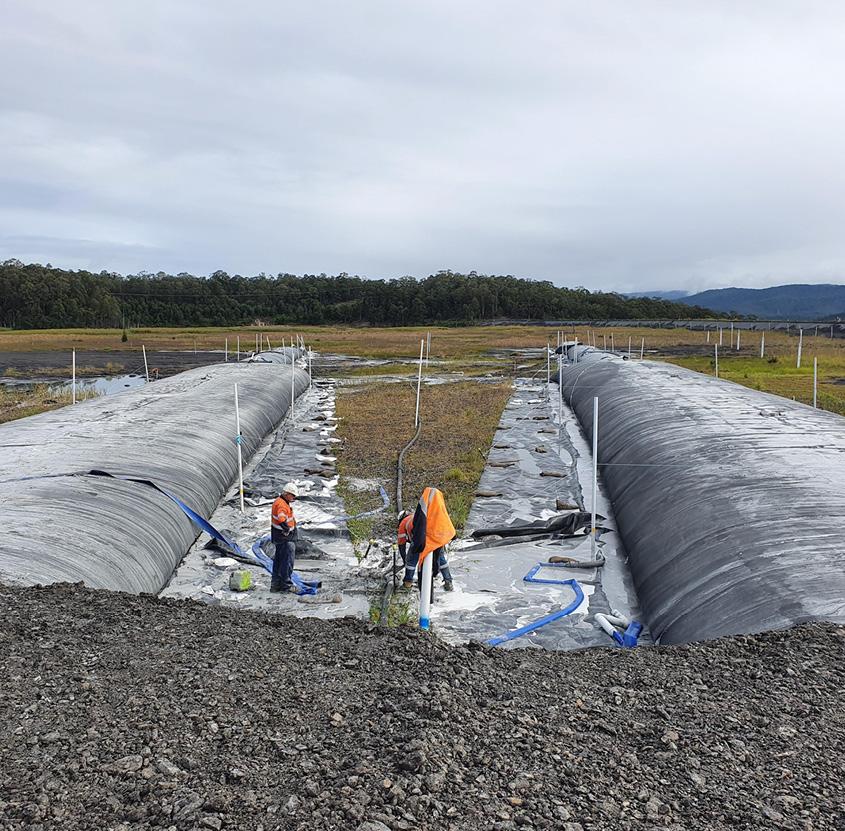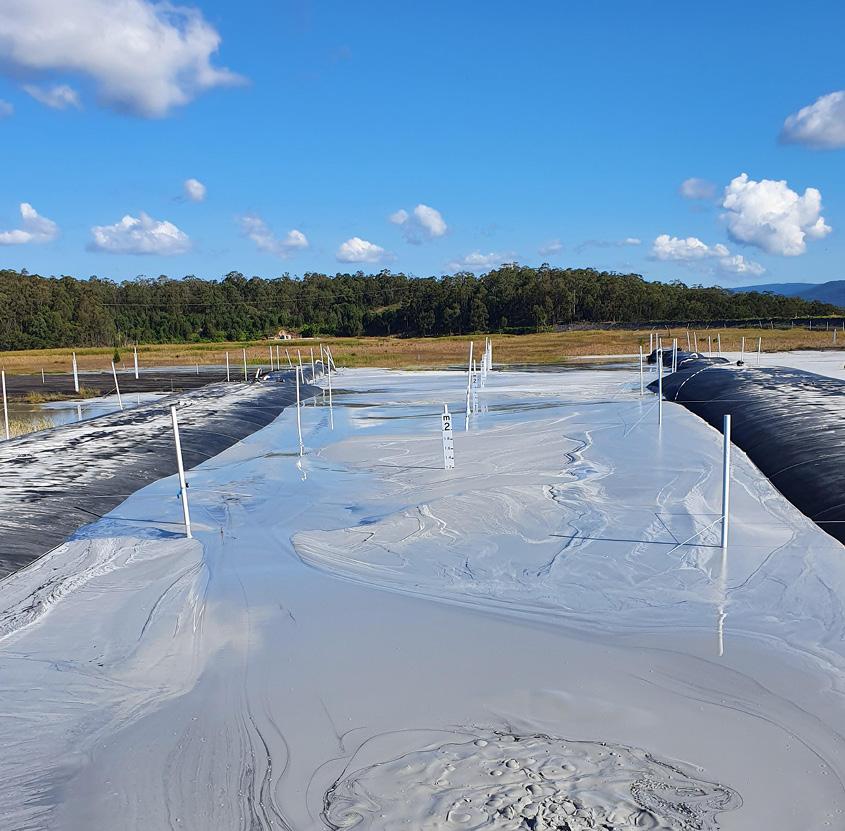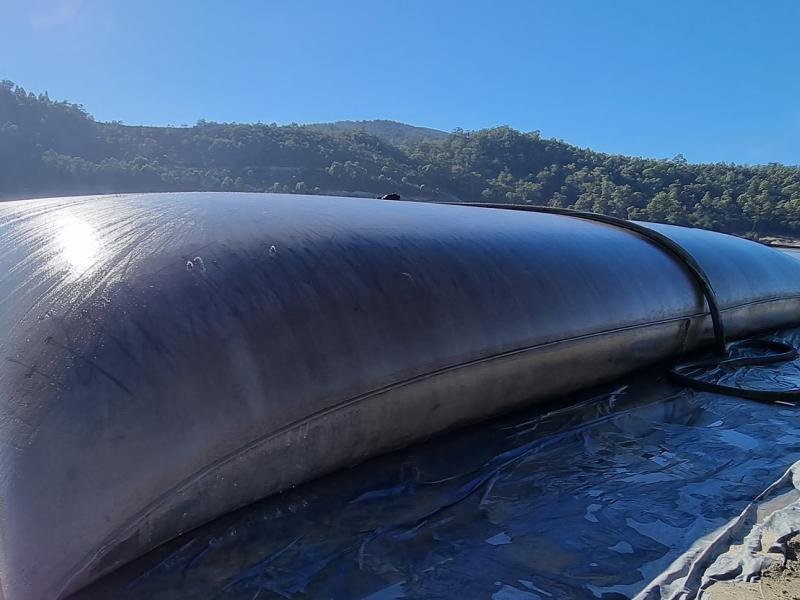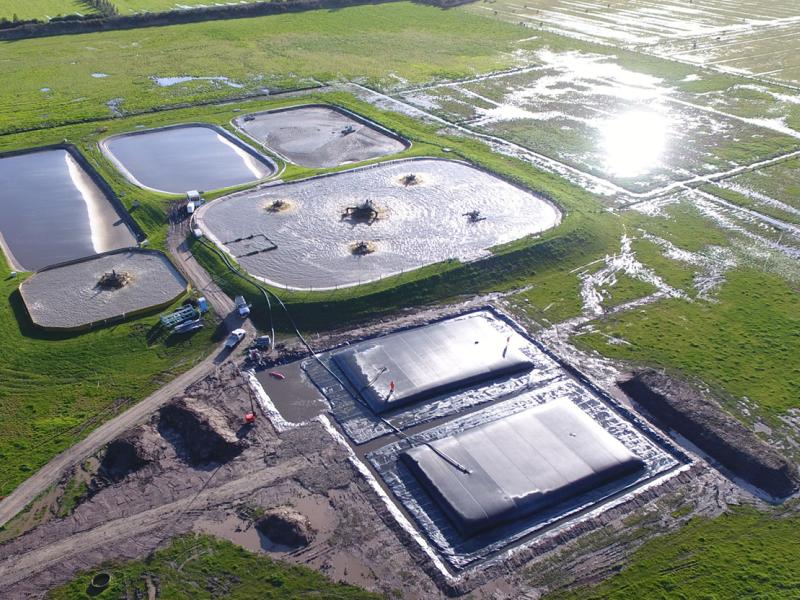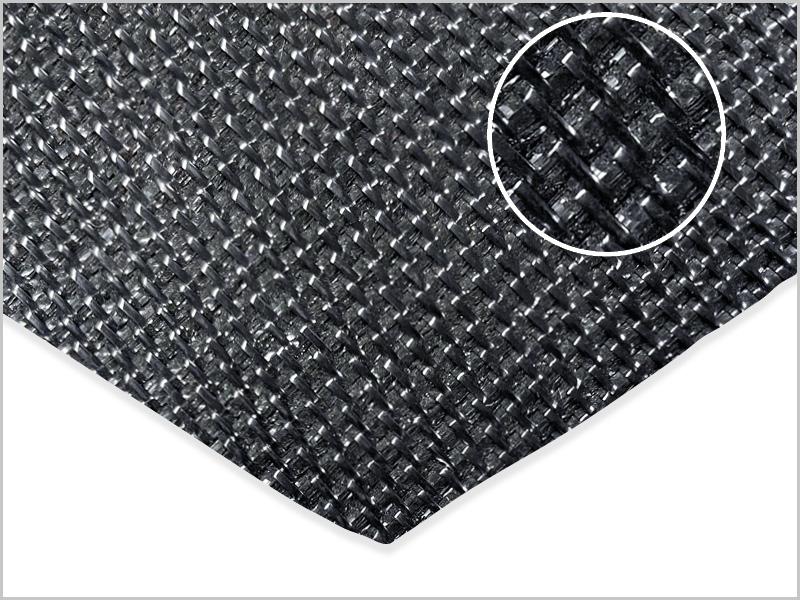
CHANNELING THE FLOW AND LIMITING THE SPREAD OF SLURRY
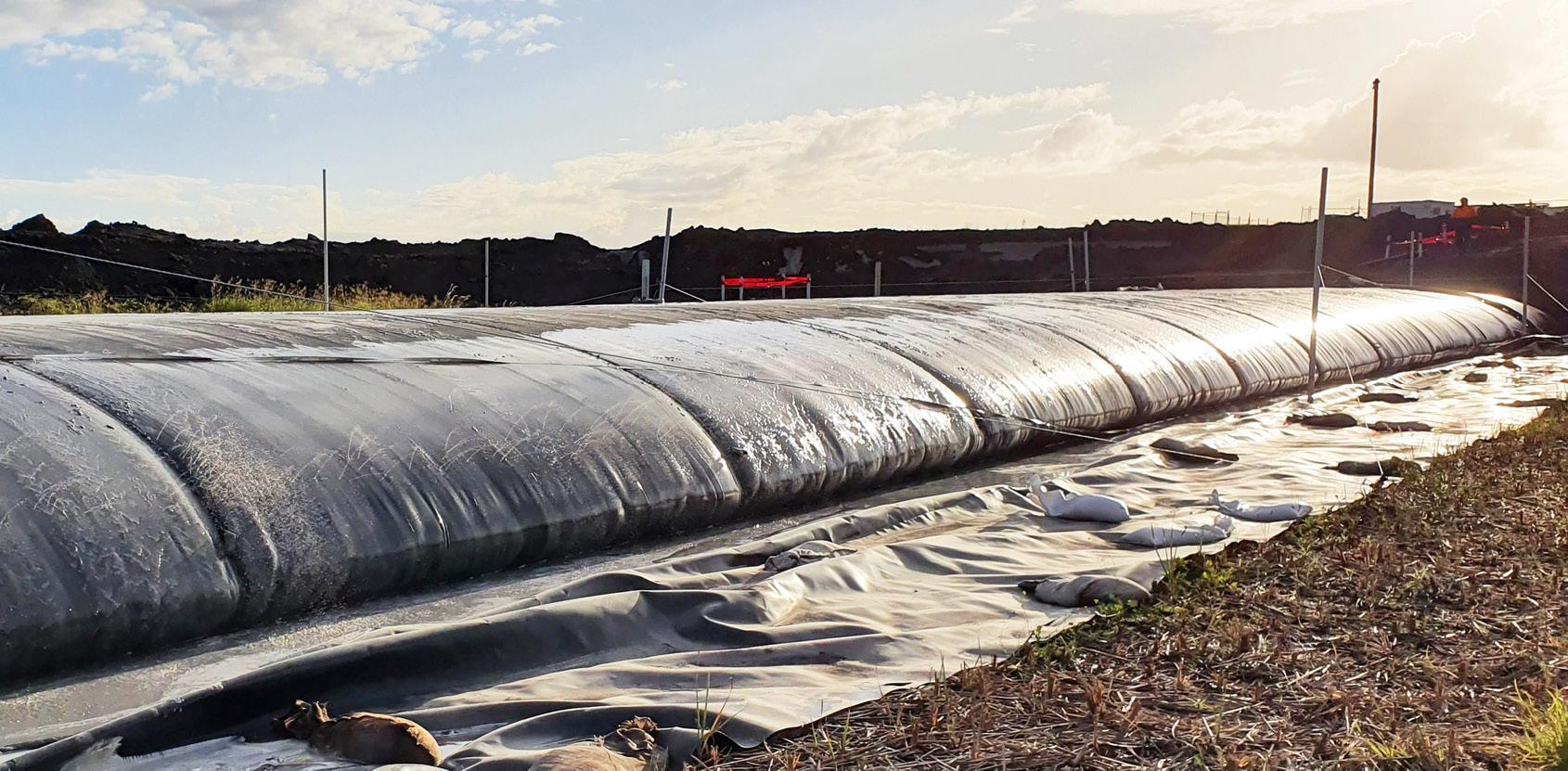
PROJECT DESCRIPTION
A mine site in regional NSW, currently under care and maintenance, required a solution to cap an existing tailings storage facility (TSF) using fly ash.
Mixing and deposition techniques and breaching characteristics needed to be confirmed in order to effectively assess the characteristics of the fly ash.
Verifying strength parameters also needed to be determined during laboratory testing.
The flowable nature of the fly ash prior to setting meant innovative techniques were required to channel the flows and limit the spread of the slurry over the top of the TSF.
Rapid and easily constructed bund walls were required as a result that would minimise manual labour over the TSF surface.
OUR SOLUTION
To assess the deposition performance of the fly ash, TenCate Geotube units were utilised as a channel via temporary retaining structures filled with fly ash.
In this case the incoming slurry was not flocculated which would normally ensure rapid dewatering of incoming slurry.
Due to the objective to create retaining structures, no polymer was introduced which meant the geotextile pores clogged and allowed the bags to stay relatively full of wet slurry, maintaining their height.
It was expected the bags would still dewater and drop in height, albeit very slowly, but were able to be refilled rapidly to the desired height via the manifold system.
Although this was not a common use of the Geotube Dewatering Container, Geofabrics were able to run through the typical set up at the remote NSW site and provide clarity on the expected performance of the bags.
Concerns around stability, settling, overfilling, clogging and softening of the tailings crust were all issues discussed while on site and were considered low risk or manageable.
Geofabrics alongside their supplier TenCate were able to support this design end-to-end ensuring all parties were comfortable with the process, which was relatively new to all involved.
The Geotube concept performed exactly as expected and the deposition characteristics of the fly ash was able to be verified.
The stakeholder and engineer were very happy with the result and are keen to continue with other applications using the unique and innovative Geotube Dewatering technology.
PRODUCT USED
- Also known as geobags, are used for sludge dewatering projects of all sizes
- No belts, gears, or complicated mechanics
- Available in many sizes, depending on volume and space requirements
- Can be mounted in mobile roll-off containers that can be transported around your property
- One of the most versatile dewatering technologies available
- GT500-366-306-B2P08 units were used, which are manufactured from GT500 woven monofilament and fibrillated geotextile, suited for dewatering that does not compromise pore size when under tension
- Made using polypropylene yarn which is inert to most water chemistries
- Can store up to 1,000m3 of material, being 30.6m long by 18.3m wide when laid flat
- Circumference of the bags are 36.6m, with each unit containing 2x200mm PVC flange filling ports
- Have a high seam strength to allow for high pump heights, which in turn creates larger volumes per sqm of footprint and induces a higher factor of safety during pumping to meet site specific requirements
